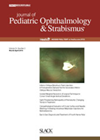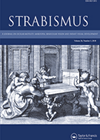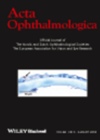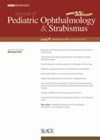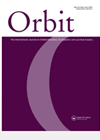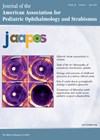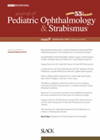You searched for "Retinoblastoma"
Analysis of needle site after intravitreal injection for retinoblastoma
This study analysed the needle washings from retinoblastoma (RB) eyes receiving intravitreal Melphalon to consider risk of tumour externalisation from the procedure – 280 injections to 63 eyes in 61 patients were evaluated. Unilateral RB was present in 24 patients...Retinoblastoma – the challenges of a rare cancer and the role of international partnerships
4 October 2023
| Richard Bowman, Mattan Arazi, Aniruddh Heroor, Kahaki Kimani, M Ashwin Reddy, Ido Didi Fabian, Swathi Kaliki
|
EYE - Paediatrics, EYE - Strabismus
Introduction: the global challenge The global burden of retinoblastoma (Rb) is one in 15,000-18,000 live births, which equates to 8000 new cases worldwide each year. The global disparities in Rb outcome represent a paradigm of health inequality worldwide [1]. In...
Retinoblastoma mortality associations with choroidal and optic nerve invasion
The authors present a retrospective cohort study. Data was extracted from the National Cancer Institute’s Surveillance Epidemiology and End Results (SEER) database, based in the US and founded in 1973. Cases of retinoblastoma were extracted using the inclusion criteria of...Retinoblastoma chemotherapeutic drugs and their toxic effects on RPE cells
1 October 2016
| Bheemanagouda Patil
|
EYE - Vitreo-Retinal
There is reported clinical evidence of retinal pigment epithelium (RPE) alterations after intra-arterial (IAC) and intravitreal chemotherapy (IViC) of retinoblastoma. The purpose of this study was to investigate the cellular toxic effects of melphalan, topotecan and carboplatin on the RPE...
Germline mutation risk in solitary unilateral retinoblastoma
This study aimed to determine the true risk for germline mutation in a child presenting with solitary unilateral RB and whether this risk differs by age at presentation. This was a retrospective review of 482 cases from 1972-2020. Age groups...Retinoblastoma management update (part 1): clinical features, diagnosis and genetics
1 January 2017
| Manoj V Parulekar
|
EYE - Oncology
The first of a two part series, this article will discuss the clinical features, diagnosis and genetic aspects of retinoblastoma. Manoj Parulekar is based at Birmingham Children’s Hospital, one of the two designated national retinoblastoma and paediatric ocular oncology treatment...
Complications with porous orbital implant after enucleation in retinoblastoma patients
1 April 2019
| Rina Bhatt
|
EYE - Orbit
This is a retrospective, case control study aimed to identify risk factors associated with complications in retinoblastoma patients following primary and secondary enucleations with porous implant placements. Patients with retinoblastoma who underwent enucleation with porous orbital implant placement between January...
Proof of concept for using aqueous humour to detect retinoblastoma variant
A proof of concept study is presented with the aim of assessing the feasibility of using aqueous humour surrogate marker for tumour tissue for identifying retinoblastoma RB1 variant. Three children undergoing enucleation for retinoblastoma were recruited from a single centre....Development of retinoblastoma care in Indonesia and the role of multidisciplinary team meetings
4 August 2021
| Primawita Oktarima (Dr), Mayasari Wahyu Kuntorini (Dr), Anne Susanty (Dr), Andi Pratiwi (Dr), Anna Radwanska (Dr), Marlyanti Nur Rahmah (Dr), Marcia Zondervan
|
EYE - Paediatrics, EYE - Strabismus, EYE - Vitreo-Retinal, EYE - General
In the second article of a two-part series (See Part 1 here), the authors focus on the diagnosis and management of retinoblastoma in Indonesia. COVID-19 doesn’t get thanked for many things, but on 19 December 2020 as the world grew...
Adjunct amniotic membrane during enucleation for retinoblastoma to prevent implant exposure
28 February 2025
| Fiona Rowe (Prof)
|
EYE - Paediatrics
Amniotic membrane (AM) has potential for treatment of retinoblastoma (RB) patients with contracted sockets after enucleation. The authors present their experience of AM with enucleation for patients with RB after chemotherapy in this retrospective study of 100 eyes of 107...
Using modified staging criteria to determine optic nerve invasion in retinoblastoma
This paper reports the use of a modified staging criteria for optic nerve invasion in extraocular retinoblastoma and its correlation with treatment outcomes in 21 patients. The average age at presentation was 41 months (7–120) and there were 14 unilateral...Establishing an intra-arterial chemotherapy service for children with retinoblastoma in Nigeria for the first time
3 April 2023
| Mattan Arazi, Oteri Okolo, Dupe Ademola-Popoola, Richard Bowman, Ido Didi Fabian, Covadonga Bascaran, Marcia Zondervan
|
EYE - General
This is the first in a series of three articles (see Part 2 here) about strengthening eye health services in Nigeria through collaboration with the LINKS and Networks run at the International Centre for Eye Health, London School of Hygiene...

